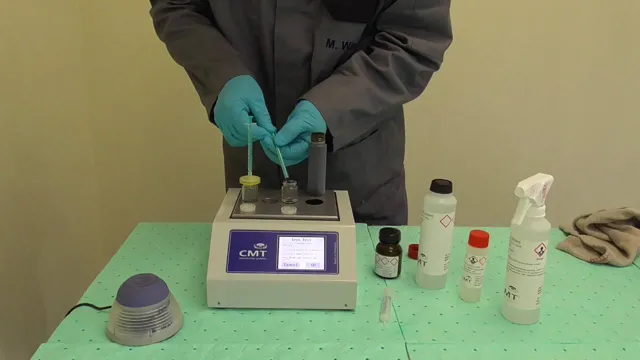Are you a proud owner of an aquarium and looking to add a new fish to your underwater oasis? Adding a new fish to your aquarium can be an exciting experience, but it’s important to do it right. Making the wrong move could lead to a stressed-out fish, and even worse, potential compatibility issues with other fish in the tank. Before adding a new fish, it’s crucial to research and understand the specific needs and behaviors of the fish you’re interested in.
Some species require specific water conditions and may not get along with other fish in the tank. It’s essential to ensure that the new fish you select will thrive in your current setup without overpowering or being picked on by other fish. Additionally, it’s important to consider the size of your aquarium when selecting a new fish.
Tanks that are too small or overcrowded can lead to stress and possible health issues for your fish. It’s always best to err on the side of caution and select a fish that will have plenty of space to swim around and interact with their environment. Adding a new fish to your aquarium can be an enjoyable experience as long as it’s done patiently and correctly.
Ensuring that your new fish is healthy and the right fit for your tank’s ecosystem is key. So, take your time, research, and make informed decisions to create a thriving and harmonious aquarium environment.
Preparing Your Aquarium for a New Fish
Adding a new fish to your aquarium can be an exciting experience, but it’s important to prepare properly to prevent any negative effects on your aquatic environment. Firstly, make sure your tank is fully cycled and stable before introducing any new fish. This ensures the water has the correct pH, temperature, and ammonia levels necessary for your new addition to thrive.
Next, quarantine your new fish in a separate tank for at least two weeks to prevent the spread of any potential diseases or parasites that may harm your existing fish. This also allows the new fish to adjust to its new environment and feeding schedule. When it’s time to introduce the new fish, make sure to acclimate it slowly to the tank by first adding small amounts of the existing tank water to it.
Finally, monitor the behavior of all fish in the tank for the first few days to ensure they are getting along and not showing signs of stress. By following these steps, you can safely add a new fish to your aquarium and create a healthy and happy aquatic environment.
Test Water Parameters
When it comes to getting a new fish for your aquarium, there are a few things you need to do to prepare and ensure your new fish will be healthy and happy in its new home. One of the most important things you need to do is test your water parameters. This is because fish are very sensitive to changes in the water, and even small imbalances can cause stress and health problems.
To test your water parameters, you will need a testing kit that measures important factors such as pH, ammonia, nitrite, and nitrate levels. If you find that any of these levels are off, you will need to take steps to correct them before introducing your new fish. So, before you head to the pet store to pick out your new aquatic friend, take the time to test your water parameters and ensure everything is in order.
Your new fish will thank you for it!

Quarantine New Fish
Quarantine new fish is an essential step before adding them to your aquarium, as it helps prevent any potential illnesses from spreading to your other fish. To prepare your aquarium for a new fish, you will need a separate quarantine tank or container that is specifically designated for this purpose. The quarantine tank should be set up and cycled before transferring the new fish into it.
Cycling the tank helps establish healthy bacterial colonies and promotes good water quality – both essential for the health of your new fish. It is recommended to quarantine new fish for at least two weeks, during which time you should carefully monitor their behavior and look for any signs of illness. If any issues arise, it is easier to treat them in a quarantine tank rather than in your main aquarium, where the other fish may also be affected.
Once the quarantine process is complete, and you are confident that the fish is healthy and disease-free, you can slowly acclimate the new fish to your main aquarium. Remember to be patient during this process, as it can take a few weeks for the new fish to adjust to their new environment and get along with their tank mates. By following these steps, you can ensure the health and well-being of your aquarium’s inhabitants, and enjoy your beautiful and thriving underwater world for years to come. (See Also: How to Draw Aquarium Background: Tips and Techniques for Creating a Stunning Underwater Scene)
Acclimate New Fish to Tank Water
When introducing new fish to your aquarium, it’s important to take precautions to acclimate them to the water in the tank. This means slowly introducing them to the temperature and chemical composition of the water to avoid any shock or stress for the fish. To do this, you’ll want to prepare a separate container of water that matches the temperature and pH levels of the tank water.
Then, float the bag containing the fish in the container for about 15 minutes, allowing the temperature of the water inside the bag to gradually adjust to the tank water. After that, add small amounts of tank water to the bag every 5-10 minutes, until the bag is filled with about half tank water and half original water. At this point, you can safely release the fish into the tank and monitor them closely to ensure they’re adjusting well to their new environment.
Remember, patience is key when it comes to acclimating new fish to your aquarium. Rushing the process can lead to health problems for your fish. So take your time and observe your new additions to the tank.
Choosing the Right Fish Species
Before adding a new fish to your aquarium, it’s crucial to research the different species available and choose the right one for your tank. Factors to consider include the fish’s size, behavior, and compatibility with other fish in the tank. Some fish are more aggressive and territorial, while others are peaceful and social.
It’s essential to ensure that the new fish will thrive in your tank’s water conditions and that it won’t disturb the existing fish’s habitat. Researching the different species beforehand will help you make an informed decision and create a harmonious environment for all your fish to coexist. Remember to acclimate the new fish to the tank slowly to minimize stress and shock.
With a little research and preparation, adding a new fish to your aquarium can be a fun and exciting experience for both you and your fish!
Research Compatibility
When it comes to setting up an aquarium, it’s crucial to choose the right fish species that will live in harmony and not cause any harm to each other. Conducting research compatibility is a must before making any purchase. Ensuring that the water quality and environmental parameters are suitable for the desired species is also essential.
Not all fish get along with one another, and some may exhibit aggressive behavior towards others, leading to stress, injury, or even death. Some species have specific dietary requirements as well. Therefore, it’s necessary to select fish that have similar feeding habits to maintain a healthy diet for all inhabitants.
Overall, taking the time to research and choose the right fish species will not only enhance the beauty of your aquarium but also provide a healthy and safe environment for your aquatic pets.
Consider Size and Activity Level
When it comes to choosing the right fish species for your aquarium, one important factor to consider is their size and activity level. Different fish species have different requirements in terms of tank size and environment. For example, some fish need plenty of swimming space while others prefer more sheltered areas.
You also need to consider the activity level of the fish you want to keep. Some species are very active and need a lot of space to swim around, while others are more docile and prefer to hide in the corners of the tank. It’s important to choose fish that are compatible with each other in terms of activity level and tank size.
If you have a large tank, you can choose a variety of active and passive fish species. However, if your tank is small, you may need to stick with smaller, more docile species. Overall, choosing the right fish species for your aquarium requires careful consideration of several factors, including size, activity level, and compatibility with other species.
Introducing Your New Fish to the Aquarium
Introducing a new fish to your aquarium can be a delicate process that requires some preparation. Before adding a new fish to your aquarium, you need to ensure the water condition is optimal, appropriate for the type of fish. You should also consider the compatibility of the new fish with the existing fish in the tank, as some species may not get along. (See Also: How to Buff Acrylic Aquarium: Step-by-Step Guide for Crystal-Clear Shine)
Try introducing the new fish at feeding time when all the fish are gathered, ensuring that there is enough food for everyone. A good way to avoid territorial disputes is to rearrange the existing decorations and plants in the tank to provide a new space for the new fish to explore. You should slow-release the new fish in a plastic bag and leave it on the surface for about 15 to 20 minutes to allow it to adapt to the water temperature.
Finally, release the new fish in the tank, allowing it to swim in its own pace. Remember, patience is crucial in introducing the new fish, and it’s better to take the process slowly than to rush it. By following these steps, you’ll have a better chance of succeeding in adding a new fish to your aquarium.
Turn Off Aquarium Lights
Introducing Your New Fish to the Aquarium When it comes to introducing your new fish to their new home in the aquarium, it’s important to take things slow. It can be tempting to want to immediately turn on the lights and show off your new additions, but this can actually be quite overwhelming for the fish. Instead, start by turning off the aquarium lights and keeping the environment quiet and calm.
This will help your fish adjust to their new surroundings without feeling stressed or threatened. Additionally, make sure to acclimate your new fish to the water temperature and pH levels before introducing them to their new home. This can be done by placing the fish still in their bag into the aquarium to let the two water sources come into balance, so your fish won’t experience shock or stress when introduced to their new home.
Remember, patience is key when introducing your new fish to the aquarium, as it can take some time for them to adjust to their new environment.
Release Fish Slowly and Carefully
When introducing new fish to your aquarium, it is crucial to release them slowly and carefully. The sudden change in water temperature and environment can be traumatic for your new fish, so it’s essential to acclimate them to your tank slowly to prevent any shock or stress. To do this, it’s recommended to float the bag containing your new fish in the aquarium for about 15 minutes to allow the temperature to slowly adjust.
This step ensures that your new fish won’t be exposed to any sudden temperature changes, which may cause shock or stress. Once the fish is properly acclimated, gently release it into the tank without muddying the water. Remember, healthy fish can survive a week without food, but they won’t survive in poor water conditions.
Therefore, it’s crucial to keep the water quality clean, oxygenated, and well-maintained before and after introducing new fish to the tank. With proper care and attention to the environment, your new fish will adapt well to the tank and immediately thrive with their new community of aquatic companions.
Monitoring Your New Fish and Tank
Adding a new fish to your aquarium is an exciting experience, but it’s important to monitor your fish and tank closely. Introducing a new fish can disrupt the delicate balance of your aquarium, so it’s important to take precautions. Firstly, make sure that your new fish is compatible with the fish already in your tank.
Different species have different requirements, and adding an incompatible fish can cause stress, aggression, and even death. Secondly, acclimate your fish slowly to the tank’s environment. This helps them adjust to the temperature, pH, and other conditions.
Monitor your fish closely for the first few days after adding them to the tank, looking out for any signs of stress or disease. Finally, keep an eye on your aquarium’s water quality. Adding a new fish can increase waste levels, so make sure that you’re not overfeeding or overcrowding your tank.
Regular water changes and monitoring of chemical levels is essential for a healthy aquarium. Overall, adding a new fish can be a fun and rewarding experience, but it’s important to proceed with caution and monitor your tank closely. (See Also: How to Make Drawing Aquarium Easy and Fun: Step-by-Step Guide)
Conclusion
In conclusion, adding a new fish to an aquarium requires careful consideration and planning. It’s important to choose a fish that is compatible with the existing inhabitants, acclimate the new fish slowly, and monitor their behavior closely. Much like introducing a new member to a social group, introducing a new fish to an established aquarium requires finesse and attention to detail.
With patience and a bit of fishy intuition, your aquarium can be home to a harmonious school of gorgeous swimmers. Just don’t forget the snacks!”
FAQs
What are the steps to add a new fish in an aquarium?
The steps to add a new fish in an aquarium are as follows:
a) Acclimate the fish by gradually adding water from the aquarium to the bag the fish came in.
b) Introduce the fish to the aquarium by slowly releasing it into the water.
c) Monitor the fish for the first few hours to ensure it is adapting well to its new environment.
How long should the acclimation process take when adding a new fish to an aquarium?
The acclimation process should take between 30 minutes to an hour to properly adjust the pH and temperature of the water for the new fish.
Can I add multiple fish to an aquarium at once?
No, it is best to add one fish at a time and make sure each fish is adapting well before adding another.
What type of fish should I add to my aquarium?
You should research and choose fish that are compatible with your current fish and aquarium conditions, such as water temperature, pH level, and tank size.
What should I feed my new fish?
It is important to research the specific dietary needs of your new fish and provide appropriate food, such as flakes, pellets, or live food.
Should I quarantine my new fish before adding it to my aquarium?
Yes, it is recommended to quarantine new fish for a few weeks to prevent the spread of disease to your current fish.
How often should I perform water changes after adding a new fish to my aquarium?
It is recommended to perform a partial water change of 20-30% every week to maintain water quality and keep your fish healthy.







